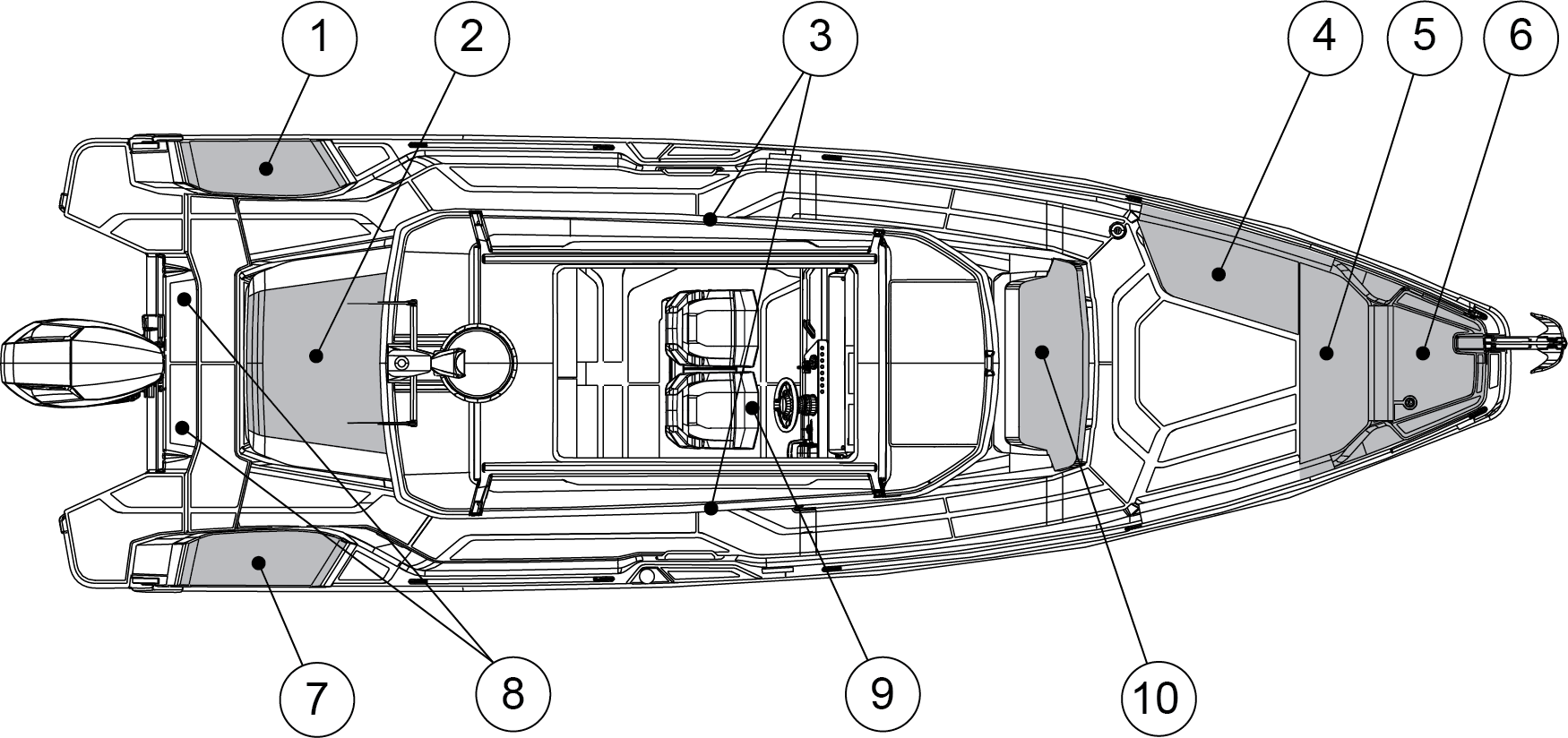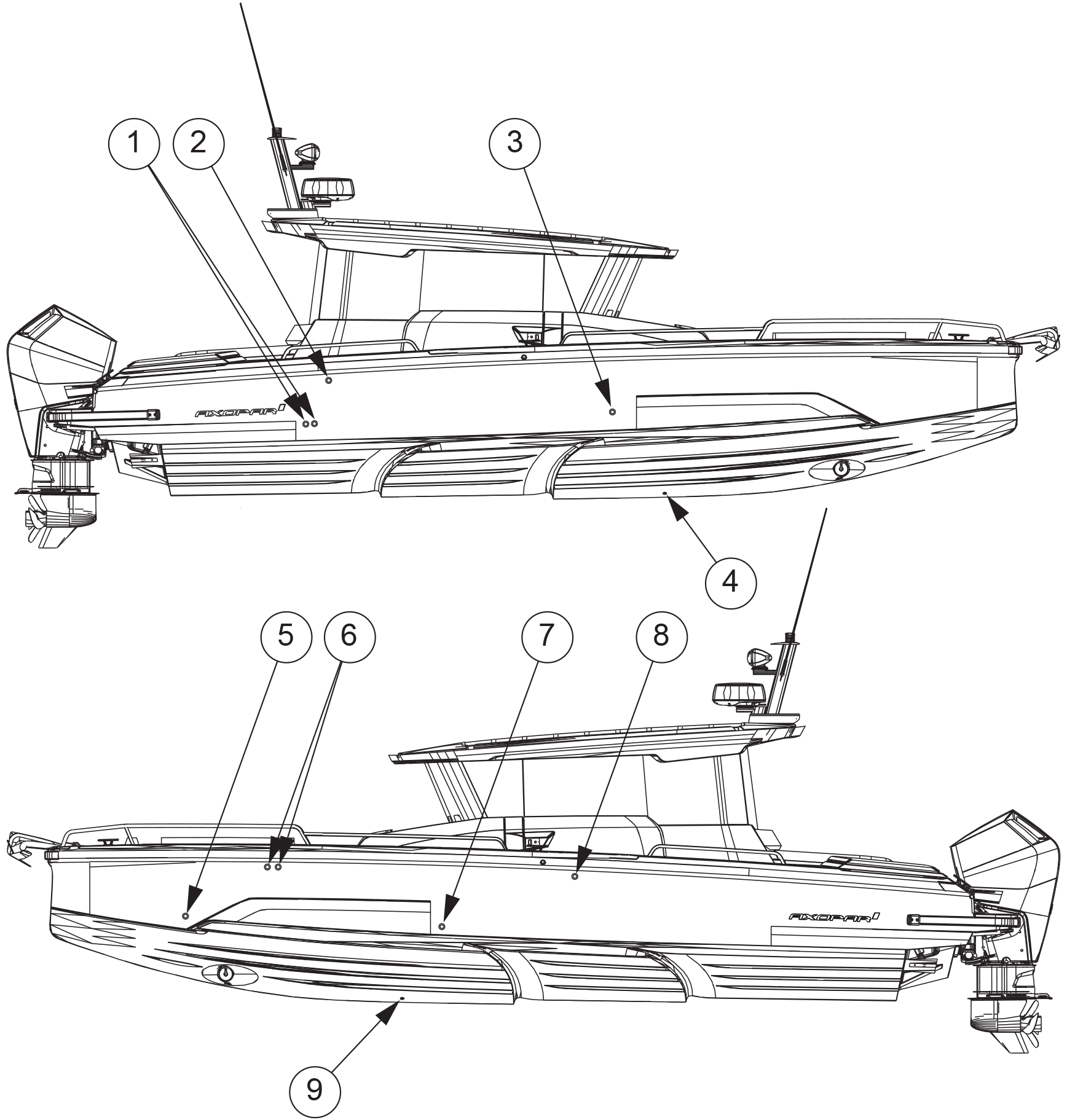There are several inlets through the boat that include valves for opening and closing such inlets. It is recommended to keep these inlets closed if the boat is out of use for a long time, and to open them again when the boat is used again. If the boat is lifted out from water or in rainy conditions, inlets should be kept open.
Always check that all hatches are securely closed before and after using the boat.
Always check in the spring when launching that the inlets through the side and bottom are tightly closed.
We recommend that you keep the windows, doors, deck hatches, roof hatches, vents and interior doors closed while driving. In stormy weather, always keep them securely closed to minimize the risk of water getting into the boat and to avoid any personal injuries.
In certain conditions and speeds, it is possible that water is sprayed inside through canopies, hatches or other openings, due to negative pressure or other effects. Risk for this can be minimized by closing the canopies, hatches or other openings.
All doors and hatches must be kept shut when under way.
The figure shows the hatches and seacocks that must be kept closed when the boat is left unmanned. Keep hatches closed also while underway.

- (1)
-
Port fender box hatch
- (2)
-
Aft deck hatch / aft cabin hatch
- (3)
-
Cabin door
- (4)
-
Side storage box
- (5)
-
Front storage box
- (6)
-
Anchor hatch
- (7)
-
Starboard fender box hatch
- (8)
-
Inspection hatches
- (9)
-
Fuel tank compartment inspection hatch
- (10)
-
Multicabin
The location and number of these components depend on the level of the equipment on the boat.

- (1)
-
Electric and manual bilge pump outlets
- (2)
-
Heaters fuel tank vent
- (3)
-
Grey water outlet
- (4)
-
Black water tank seacock
- (5)
-
Manual front bilge pump outlet
- (6)
-
Fresh water and black water tank vents
- (7)
-
Electric front bilge pump outlet
- (8)
-
Heater exhaust
- (9)
-
Transducer